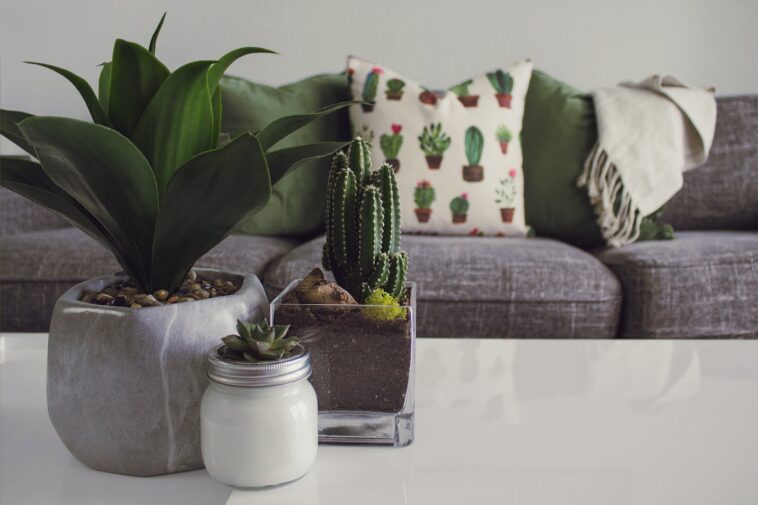Home decor is more than just choosing a color palette or selecting furniture. It’s about creating a space that reflects your personality, offers comfort, and is aesthetically pleasing.
Your home is a reflection of your journey, your memories, and your aspirations. It’s a space where you should feel utmost pleasure, surrounded by elements that resonate with you.
If you don’t know how to achieve this, ATY Home Decor will help you find perfect solutions for you and enjoy the process.
The Importance of Balance
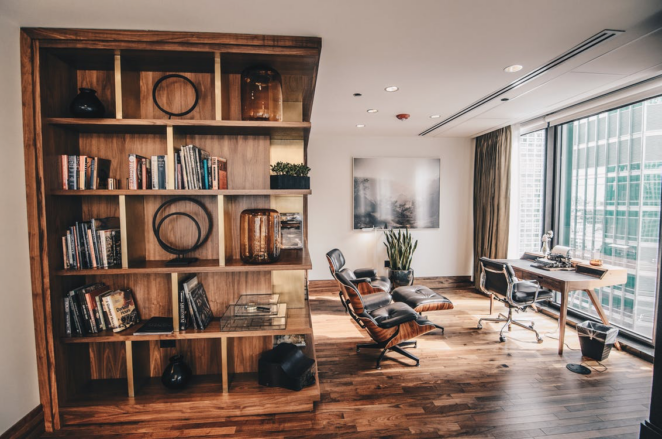
Balance in home decor refers to the equal distribution of visual weight in a room.
Whether it’s through colors, furniture, or accessories, achieving balance ensures that no area of the room overpowers another.
Symmetry is one way to achieve balance. For instance, placing matching lamps on either side of a sofa can create a harmonious look.
However, balance doesn’t always mean symmetry. Asymmetrical balance, like a large artwork on one wall and a cluster of smaller frames on the opposite, can be just as effective.
Proportion and Scale
Proportion and scale are crucial in ensuring that the items in your space look like they belong together. This means that the size of furniture and decor items should relate well to each other and the room’s size.
Imagine a massive sofa in a tiny living room; it would overwhelm the space. Conversely, a small rug in a large room might look lost.
By understanding proportion and scale, you can select items that fit perfectly in your space, creating a harmonious and cohesive look.
Color Theory
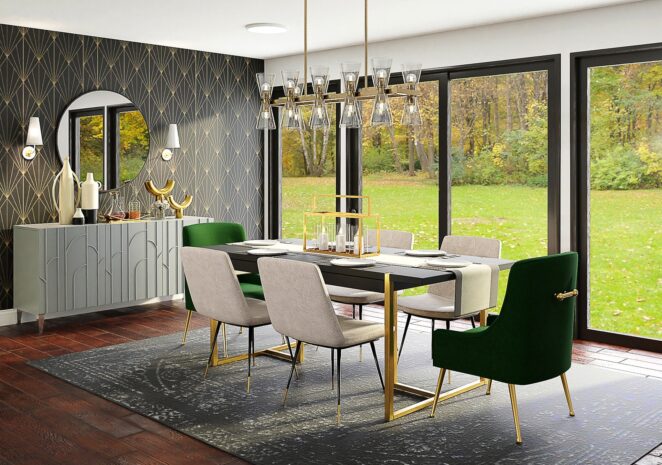
Colors evoke emotions and set the mood for any space. Let’s delve into how you can use color theory to create a harmonious home.
Choosing a Color Palette
The colors you choose play a pivotal role in determining the vibe of your room.
Warm colors like reds, oranges, and yellows evoke energy and coziness, while cool colors like blues, greens, and purples bring a sense of calm and serenity.
Start with a base color, usually neutral, and then add two or three accent colors.
For a harmonious look, consider using analogous colors (those next to each other on the color wheel) or go for a monochromatic scheme with different shades of the same color.
The Power of Neutrals
Neutrals are often overlooked, but they are the backbone of most decor schemes. Shades like beige, gray, white, and black can provide a calming backdrop, allowing other colors or decor pieces to shine.
Neutrals are versatile. While a completely neutral room can feel serene and sophisticated, adding pops of color through accessories can instantly change its vibe.
The key is to find the right balance and ensure that the neutrals complement, not compete with, the other colors in the room.
Choosing Textures and Patterns
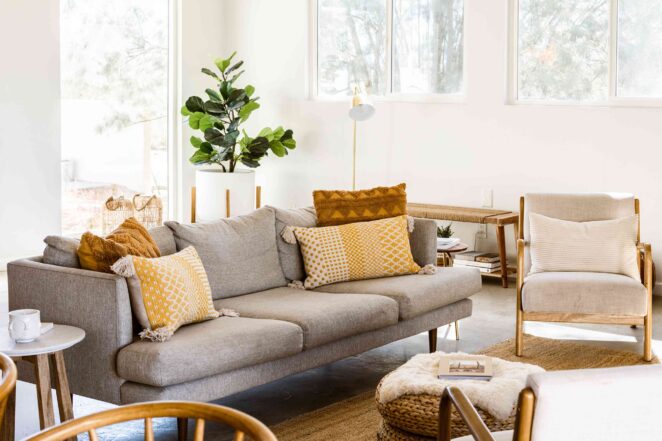
Textures and patterns add depth and interest to any space. Let’s explore how to incorporate them seamlessly into your decor.
Mixing and Matching Patterns
Patterns can be intimidating, but when mixed correctly, they can bring a room to life. The trick is to find a common color or theme and vary the scale of patterns.
For instance, if you have a large floral print on your curtains, consider a smaller geometric pattern on your cushions.
The common color will tie them together, while the varied scales will ensure they don’t compete for attention.
Incorporating Textures
Textures appeal to our tactile senses and can make a room feel cozy and layered. Think of the difference between a leather sofa and a plush velvet one, or a smooth glass table versus a rustic wooden one.
Incorporate a mix of textures to give your room depth. Soft furnishings like cushions, rugs, and throws are easy ways to introduce different textures.
Remember, contrast is key. Pairing a sleek marble countertop with wooden stools or a soft rug with a metal coffee table can create a harmonious yet intriguing look.
Play With The Lighting!
Lighting can make or break a room. It not only serves a functional purpose but also sets the mood and highlights your decor.
Layering Different Light Sources
Layering light sources is the key to achieving a well-lit and cozy space. This means incorporating ambient (general), task, and accent lighting in a room.
Ambient lighting provides overall illumination, usually through ceiling fixtures or floor lamps. Task lighting, like desk lamps or under-cabinet lights, focuses on specific areas for activities like reading or cooking.
Accent lighting, such as wall sconces or picture lights, highlights specific decor elements or architectural features.
Choosing the Right Bulbs
The type of bulb you choose can drastically change the ambiance of a room. There are various options, from warm incandescents to cooler LEDs.
Warm light creates a cozy, intimate atmosphere, ideal for living rooms and bedrooms. Cooler light, on the other hand, is energizing and better suited for workspaces or bathrooms. Consider the purpose of the room and the mood you want to set when selecting bulbs.
Selecting the Right Furniture
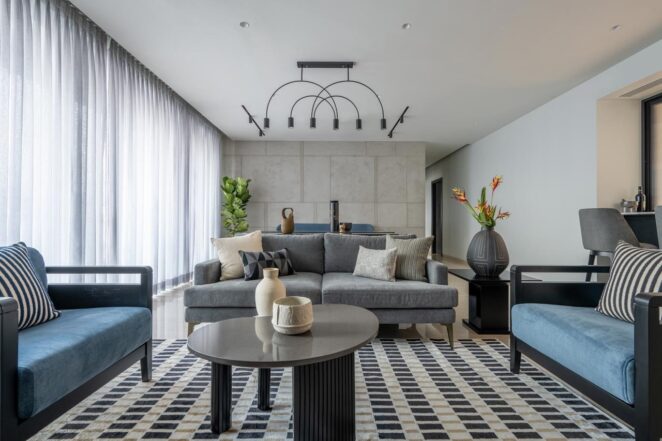
Furniture is a significant investment and plays a pivotal role in defining a room’s style and functionality.
When choosing furniture, consider both its aesthetic and functional aspects. Think about the scale of the room, the existing decor, and how you intend to use the space.
For smaller rooms, opt for multi-functional furniture like sofa beds or nesting tables. In larger spaces, you can play with bigger statement pieces.
Regardless of the room’s size, ensure there’s a clear path for movement and that the furniture doesn’t obstruct any natural light sources.
How to Arrange It?
How you arrange your furniture can influence the flow and feel of a room. The key is to create a focal point and arrange the furniture around it.
In living rooms, this could be a fireplace or a TV unit. In bedrooms, it’s often the bed. Once you’ve identified the focal point, position your largest furniture piece opposite it and then arrange smaller pieces around it.
This not only creates a balanced look but also facilitates conversation and interaction.
Accessories – The Crown of the Room
Accessories breathe life into a room. They’re the small details that showcase your personality and make a space truly yours.
Curating Personal Collections
Personal collections, whether it’s art, books, or travel souvenirs, tell a story. Displaying them not only adds a personal touch but also serves as a conversation starter.
However, avoid clutter. Choose pieces that resonate with you and complement the room’s decor. Remember, less is often more.
A few well-placed items can have a more significant impact than a plethora of mismatched ones.
Incorporating Plants and Natural Elements
Plants bring a touch of nature indoors, purify the air, and add a splash of color. From tall potted plants to small succulents, there’s something for every space.
If you’re not blessed with a green thumb, consider low-maintenance plants like snake plants or ZZ plants.
Alternatively, dried flowers, wooden elements, or even natural stone accessories can bring in that organic touch without the need for maintenance.
Conclusion
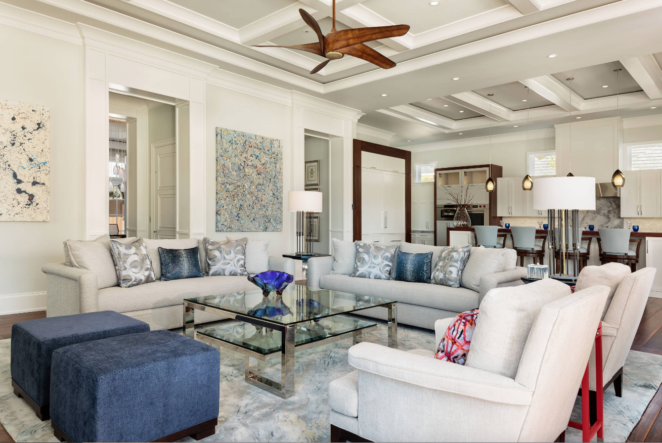
Creating a stylish and cozy space is an art, a journey of blending aesthetics with functionality, personal preferences with timeless principles.
Achieving home decor harmony isn’t about adhering strictly to rules but understanding the underlying principles and then adapting them to your unique style and needs.



